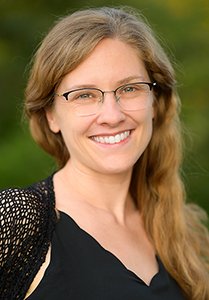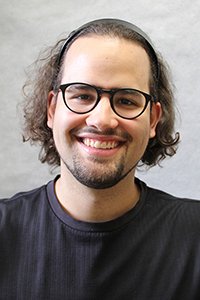hUMNs of Chemistry #13


Gwen Bailey
Sher/her
Assistant Professor
Tell us about your journey to the University of Minnesota.
I became fascinated with synthetic chemistry as an intern at Tekmira Pharmaceuticals (now Arbutus Biopharm) in Burnaby, BC. It struck me as so powerful that humans could manipulate matter in order to make and break bonds and create compounds with new chemical compositions and properties. Later in third-year inorganic chemistry class, I became fascinated with the chemistry of metals, and the rest of my career has been devoted to pursuing this passion. Like many others in my discipline, I was motivated by the desire to learn and develop new knowledge by carrying out experimental research. I was also passionate about sustainability and soon realized that I could use my knowledge of inorganic chemistry to contribute to more sustainable synthesis and energy solutions. My excitement for this topic is what drove me to pursue a Ph.D. at the University of Ottawa (fun fact: Canada's only officially bilingual institution!) and then a postdoc at Caltech.
We would love to hear more about your research! What do you hope to accomplish with this work? What is the real-world impact for the average person?
Our research is focused on development of atomically precise nanocluster systems that mimic the structure and reactivity of heterogeneous electrocatalysts. By preparing these discrete compounds and evaluating them in solution environments, we can precisely pinpoint important mechanistic information including the site of substrate binding, delocalization of charge, and the dynamic reconfiguration of bonds that leads to substrate turnover. Our cluster systems not only capture the capabilities of heterogeneous electrocatalysts in a discrete model but they go one step beyond these capabilities in that they have a high density of active sites and are precisely tunable in their steric environment and electronic structure according to well-defined structure-property relationships. Overall, we hope to develop new approaches to catalysis using our atomically precise nanocluster systems and ultimately contribute solutions to solve climate change, for example by developing methods for synthesizing commodity chemicals on large scale using abundant feedstocks (like CO2) and renewable electricity.
What courses do you teach? What can students expect to get out of your course?
I teach advanced inorganic chemistry classes (CHEM 4745/8745 and 4715/8715) and introductory general chemistry (CHEM 1061). I love talking to students and drawing them into deep conversations about the properties and study of matter! I believe that education is accessible to anyone with a good work ethic and growth mindset, and my teaching style reflects this philosophy. Activities in my classes are split between short, interactive lectures and small-group activities where students go deep with the material through problem-solving and discussion. Students in my classes can expect to be challenged intellectually and ultimately rewarded with new ways of thinking about challenging scientific concepts.
What do you hope to contribute to the chemistry community at the University?
Beyond the science, I hope to reflect that chemistry is something that is accessible and practicable for all, and that teamwork and mentorship are integral to the practice. Also, I hope to provide opportunities for students to grow their personal, interpersonal, and scientific abilities through the practice of science and through participation in conferences and other programming.
What do you do outside of the classroom/lab/office for fun?
I am pretty much obsessed with training my body for better health and longevity. I have enjoyed reading books such as "Outlive" by Peter Attia that have focused my efforts in these areas. My current exercise program includes regular zone 2 training (cycling/walking), interval training, strength training, and (mostly for fun) bouldering.

John Beumer
Senior Designer, Center for Sustainable Polymers
Please give a brief description of your role within the UMN Chemistry department.
I am the Senior Designer for the Center For Sustainable Polymers. My day-to-day tasks include creating artwork for publication, managing the website, and leading our monthly research meetings.
Tell us about your journey to the University of Minnesota.
Before coming to the University of Minnesota I was a design consultant for Pentair and Bright Health in the Twin Cities. In addition, I spent a fair amount of time in the nonprofit world leading marketing and communications efforts.
What’s your favorite piece of chemistry/science pop culture media? Why do you love it?
I remember visiting the Bell Museum for a CSP Annual Meeting years ago and we got to see closeup images of the Mars surface in their Planetarium. It is so special to live in a time when we get to see images from another planet. And I am equally excited to see what the Mars Perseverance rover returns to us in 2033.
Where is your favorite spot in the Twin Cities?
The Prospect Park Water Tower is a favorite spot. It is currently in the process of renovation but my guess is that they will have limited access to the tower again in a couple of years. It is a great place to get a birds eye view of Minneapolis.

Emily Robinson
She/her
Graduate Student, Buhlmann Group
Tell us about your journey to the University of Minnesota.
I am a Minnesotan, born and raised! I went to college and got my chemistry degree at the University of Minnesota Morris, which is part of the U system but out in the middle of western Minnesota, in 2020. I also studied for a semester at the University of Limerick in Ireland for a semester studying chemical nanotechnology. I applied for graduate school all over the US but UMN was one of the few schools felt I could thrive in. I loved the atmosphere and people I met.
We would love to hear more about your research interests! What do you hope to accomplish with this work? What is the real-world impact for the average person?
I work on the development of ion-selective electrodes. Ion detection is vital for medical analysis, environmental monitoring, and industrial applications. think of ions such as chloride and potassium, for medical purposes such as to assess kidney function, and nitrate and arsenate, common environmental pollutants. While there is equipment that can detect there ions, many of them are costly, require complex instrumentation with trained professionals, and are not time-efficient. Ion-selective electrodes (ISEs) are my are an great alternative, they have high selectivity, sensitivity, and versatility. They also overcome the limits that many other instruments have, being relatively small, easy to handle, and give fast response times. These factors are critical for point of care, for rapid test results, and for deployable, wearable, and implantable devices. For these applications, sensors not only need to be dependable for short periods but for days or even years. That is why I have pushed the boundaries of ISE systems to develop exceedingly stable sensing and reference electrodes that can be used to meet the needs of the medical, environmental, and industrial fields today.
Are you involved in any student groups? What inspired you to get involved?
I am currently the co-president for the Joint Safety Team! I have always been a big proponent of lab safety culture and when the opportunity came up, I thought why not? I have been able to work with other lab safety teams throughout the US and we recently submitted a paper on LSO programs as well as were accepted to host a symposium at ACS fall on lab safety culture. Lab safety is something that affects everyone, whether it be on big or small scales, and I am very happy to have been able to be a part of that here.
What do you do outside of the classroom/lab/office for fun?
We keep a garden on our patio that I (try to) help take care of and I am always down for an easy hike in the fall.
Where is your favorite spot in the Twin Cities?
Black Coffee & Waffle Bar
Tell us about who makes up your household (including pets).
Our household is myself, my partner Zach who does cancer research at UMN, and our adorable grey tuxedo cat Beatrice